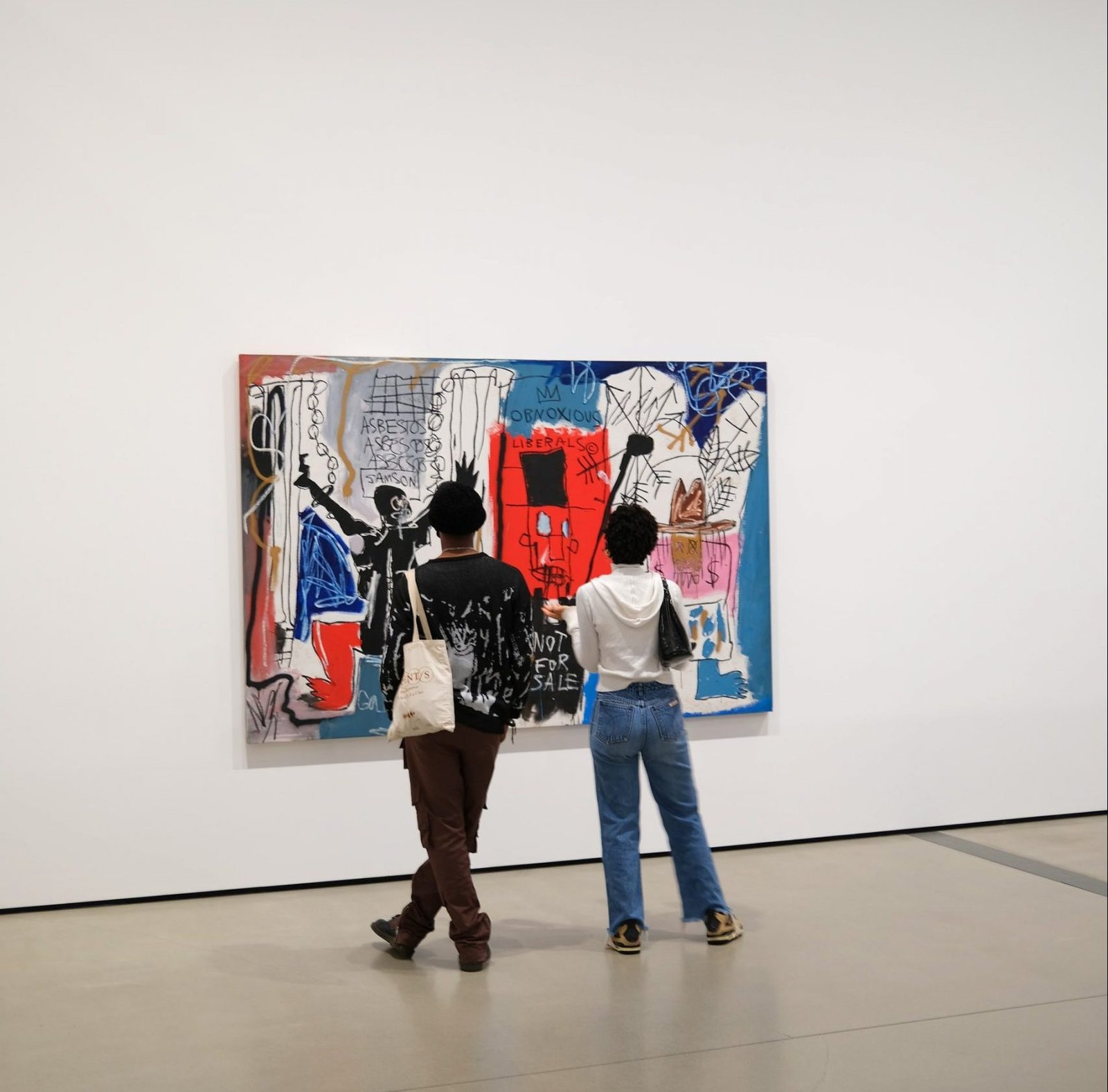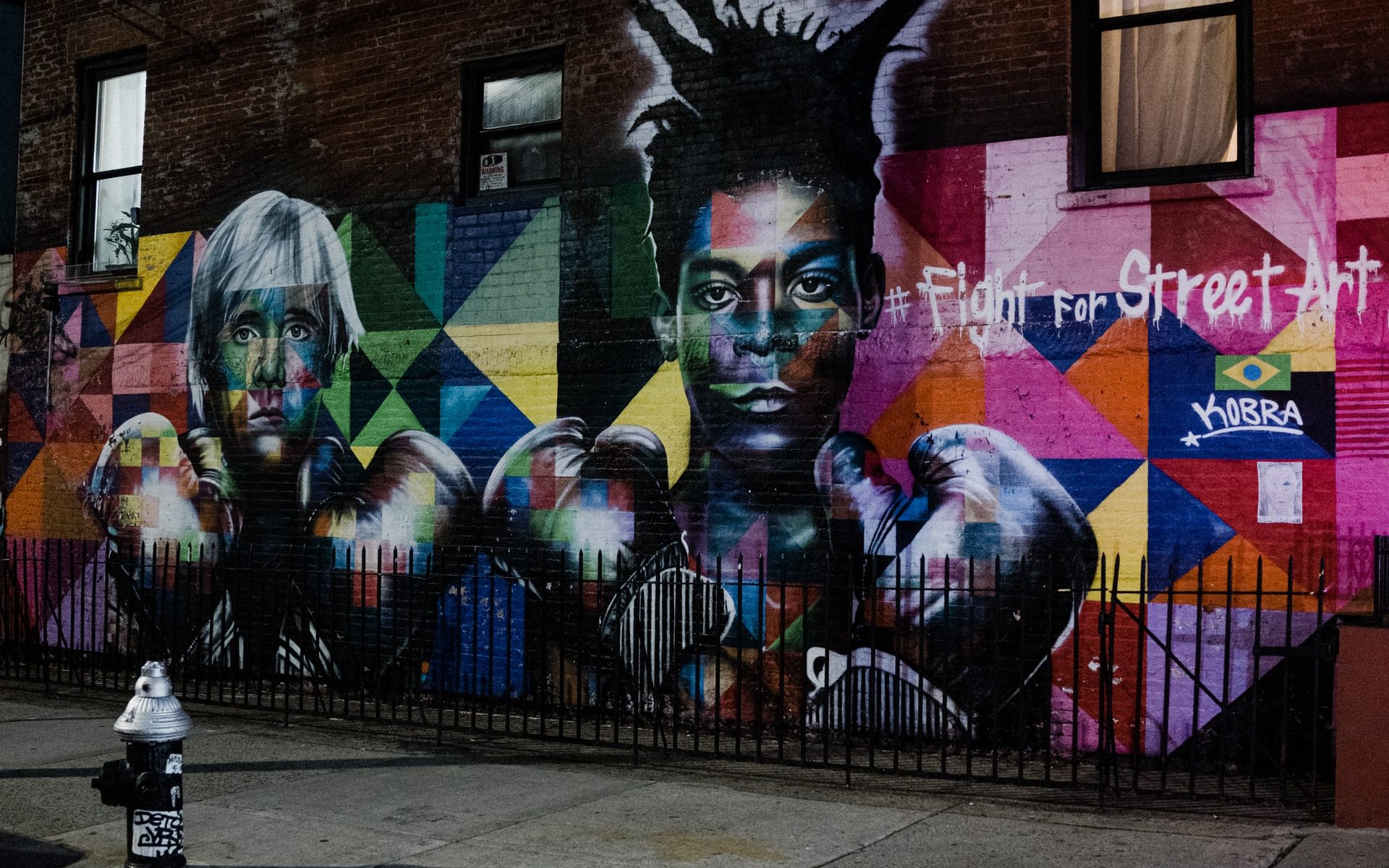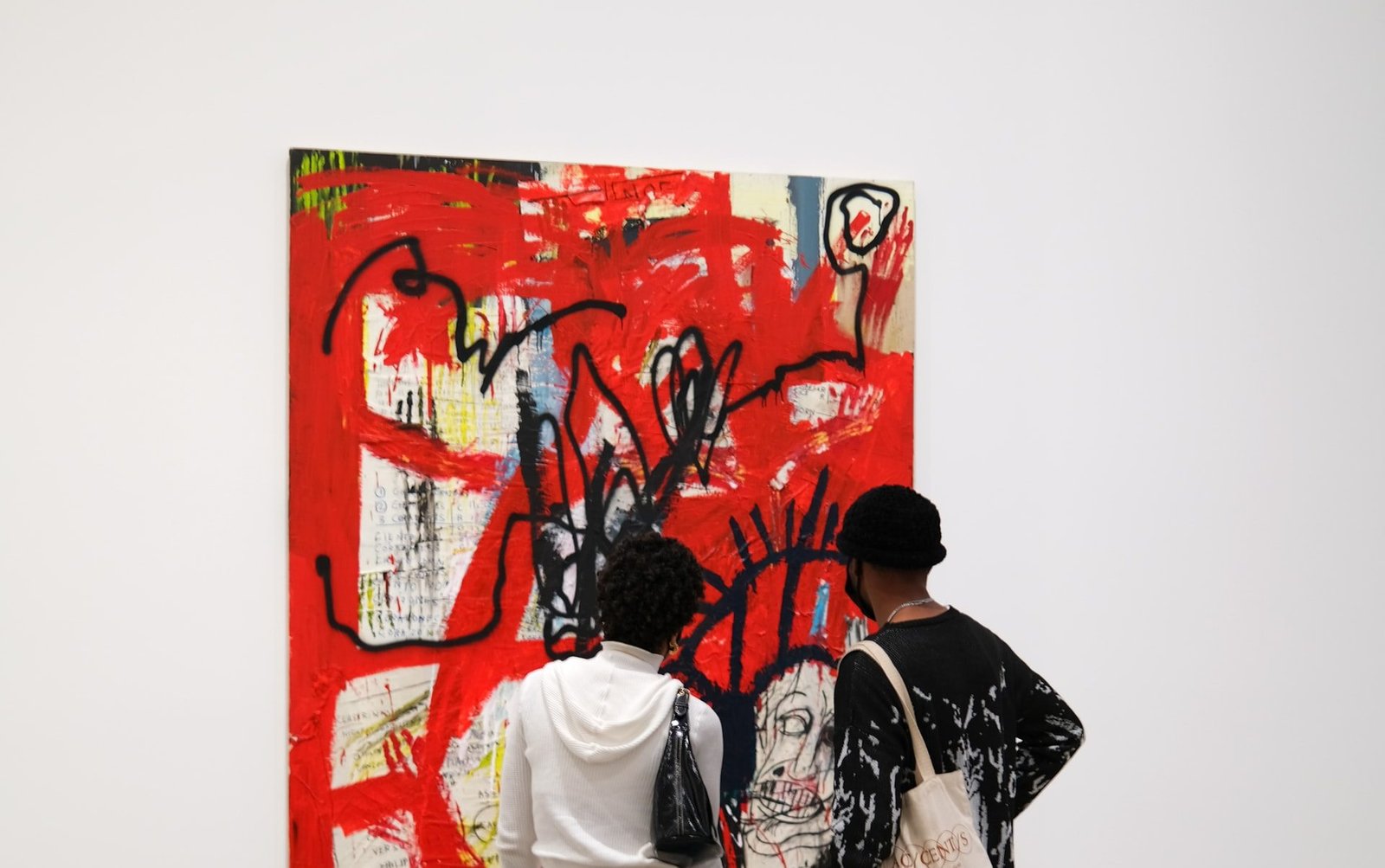
In 2017, Untitled by Jean-Michel Basquiat was sold for over 110 million dollars, the highest price ever paid for the work of any American artist. This sparked a new wave of interest in the life of the enigmatic artist.
A bright star and defining figure of the neo-expressionism art movement in the 1980s, New York-born artist Jean-Michel Basquiat is credited with bringing the black experience to the otherwise homogenously white art scene of his time. During his life, his work was showcased alongside that of other highly acclaimed and ground-breaking artists, such as his contemporaries Keith Haring and Andy Warhol.
Despite having his work referenced by countless other artists, writers, and musicians over the years, Basquiat struggled to be acknowledged as a serious artist during his brief but prolific career. He tragically passed away in 1988, at 27 years old, lending his image a legend-like status and surrounding his career in myth.

Basquiat’s rise to fame was nothing short of meteoric, giving him celebrity-like status. In a career that lasted only seven years, spanning from 1981-1988, he produced more works than most artists do in a lifetime; allegedly over a thousand works including drawings, sketchbooks, prints and, most notably, paintings.
Jean-Michel Basquiat was born in New York in 1960 to a Haitian father and Puerto-Rican mother. From a young age, his mother encouraged his interest in the arts, even enrolling him as a junior member of the Brooklyn Museum of Art. Growing up, Basquiat was gifted, learning to read and write at a very early age. He was also mischievous, often playing pranks on his younger sisters. He attended an arts-oriented private school, but was often bored in class, drawing comics, and doodling on his notes. He was expelled a year before graduating high school due to playing a prank on the principal, which led to him having to leave home at the age of 17.
It was around this time that he teamed up with his close friend, Al Diaz, to create graffiti on buildings in Lower Manhattan under the pseudonym SAMO, which stood for “same old shit”. Diaz and Basquiat had previously worked together on their high school’s newspaper. As SAMO, they would spray paint witty, poetic, or satirical phrases which gained attention in the graffiti community. Eventually, Basquiat revealed himself as the artist behind SAMO and used the attention to help promote himself. He began selling postcards of his work, one of which he sold to Andy Warhol, whom he would later reconnect with and start a friendship.
The 1980s were a vibrant time in the New York arts community. Conventions and expectations of various art forms were being tested, leading to the dawn of neo-expressionism and the birth of hip hop. Young artists at the time were often multidisciplinary, experimenting in various arts forms, with most of them being part of a band at some point. In Basquiat’s case, he founded the noise rock band “Gray” with his Michael Holman, whom he met at a party.

Basquiat moved in with his friend, and then lover, Alexis Adler, who documented his chaotic and eclectic artistic process. Not yet being able to afford canvases, he would paint on scrap pieces of material such as wood that he would find, as well as the walls, floor, doors and furniture, practices he continued into later years of his career. Even as a more established artist, he would reportedly create in a space full of material such as books and magazines, and work on several pieces at once with the radio and TV playing.
Basquiat’s personal artistic style was just as chaotic and complex as his process. It involved the combination of many mediums, such as oil paint, spray paint, wax crayons, oil stick and scraps of paper combined in a mix of techniques like collage and silk screen printing along with writing and painting to new and innovative effect. Despite not having been to art school, he was very educated in art history and the influence of great artists such as Picasso, Da Vinci and Rauschenberg were visible in his works. However, he went beyond simply referencing them, and combined them with his own unique lived experiences, interests, and cultural heritage to tell impactful stories.
A distinctive feature of Basquiat’s work is the visual language he created to make statements in his pieces. He would often write directly on his works, sometimes painting over the words purposefully in order to add interest. There were repeating motifs of skulls, traditional African masks, and historical and cultural figures found throughout his body of work, referencing themes of oppression, marginalization, and representation. It is likely because of the content matter that regular art audiences initially found his work difficult to engage with, and due to prejudice that critics failed to give him adequate recognition.
In spite of his evident talent and success, the public perception of Jean-Michel Basquiat was not what he would’ve liked it to be, or even accurate. While he was quite popular, the media pushed a misinformed and cliché narrative of him growing up underprivileged with little education, when the truth was that he came from a middle-class background. While his arts education might have been unconventional, the young artist was well-versed in art history, literature, film, and music. Critics begrudgingly acknowledged his talent, instead attributing it to some sort of “primitive genius”, and continued to label him as a graffiti artist long after he had transitioned to other forms of art. The prejudice extended beyond the arts world. Even at the height of his career, Basquiat would have trouble getting a cab home from high end parties and was once held back for questioning at the airport because security refused to believe that a black man with dreadlocks like himself could afford to fly in business class.
However, it was precisely injustices like these that fuelled Basquiat’s creative mission. He would crown or even “saint” defining figures of black culture such as artists, performers, and athletes, making space for their legacies in history, and challenging the Western portrayal history. In his art, he would revise history and make a place for black excellence in a society that otherwise refused to acknowledge it. Basquiat also crowned himself in his works, demonstrating his ambition to become great and representing how he intended to continue the legacy of excellence of his heroes.
Unfortunately, the chaotic nature that made Basquiat’s artwork so successful wreaked havoc in his personal life. As his popularity picked up and he was selling more art than he could create, Basquiat’s lifestyle also drastically changed. He would spend lavishly and party hard with the rich, famous, and beautiful, at a time when hard drugs were widespread from Wall Street to L.A. His career was growing exponentially, with his pieces selling out on the first night of showings and he showed no sign of slowing down.
One of the few people who could allegedly convince him to keep his drug use in check was Andy Warhol. The two were reunited at the height of Basquiat’s career, at a point where Warhol was looking for something of a comeback. The two decided to partner up on a project with Warhol hoping to spark some new interest in his career, and Basquiat hoping that this would solidify him as a legitimate artist in the eyes of the critics. The collection mainly consisted of canvases painted over in a solid colour, then with Warhol painting a design over top, and finally Basquiat completing the piece with elements of his own personal style and visual language. Unfortunately, the collaboration was badly received. Even though pieces have gone on to be sold for millions, and elements of it have been reference in popular culture decades later including the iconic poster, at the time, critics did not see the value in the project. One review even called Basquiat “Warhol’s mascot”, something the young artist never seemed to recover from.
Following the failure of this collaboration, along with the unflattering and patronising view of his work from the arts scene, Basquiat and Warhol’s friendship suffered and the two grew apart. It wasn’t long after that Warhol passed away from a complication during a surgery, an event which took an even larger toll on Basquiat. The artist withdrew almost entirely from his friends, and no longer restricted himself in his drug usage. In 1988, he passed away from a heroin overdose.

Basquiat’s tragic end was, in a sadly ironic twist, part of what has solidified his legacy as a legend along the lines of Van Gogh. Over the years, his work has come to receive the recognition it deserves and is acknowledged for its lasting cultural and artistic impact. The provocative and ground-breaking nature of works such as Untitled is now embraced, and the way his works fearlessly tackled topics of oppression, racism, and discrimination is seen as one of their many strengths. Instead of seeing his style as “primitive”, art critics now refer to Basquiat’s work as ground-breaking, visionary, and powerful. He is now attributed with initiating the neo-expressionism art movement.
Ultimately, Jean-Michel Basquiat was correct in crowning himself among the heroes of black culture. The work he did for black visibility in the arts was instrumental and his influence continues to be seen, felt, and heard in all aspects of popular culture from music to fashion to film. The world was lucky to have his talents and to continue to be inspired by the legacy he left behind. His works are currently displayed at likes of the Museum of Contemporary Art in Los Angeles, and the Soho Contemporary Art Gallery in New York.










